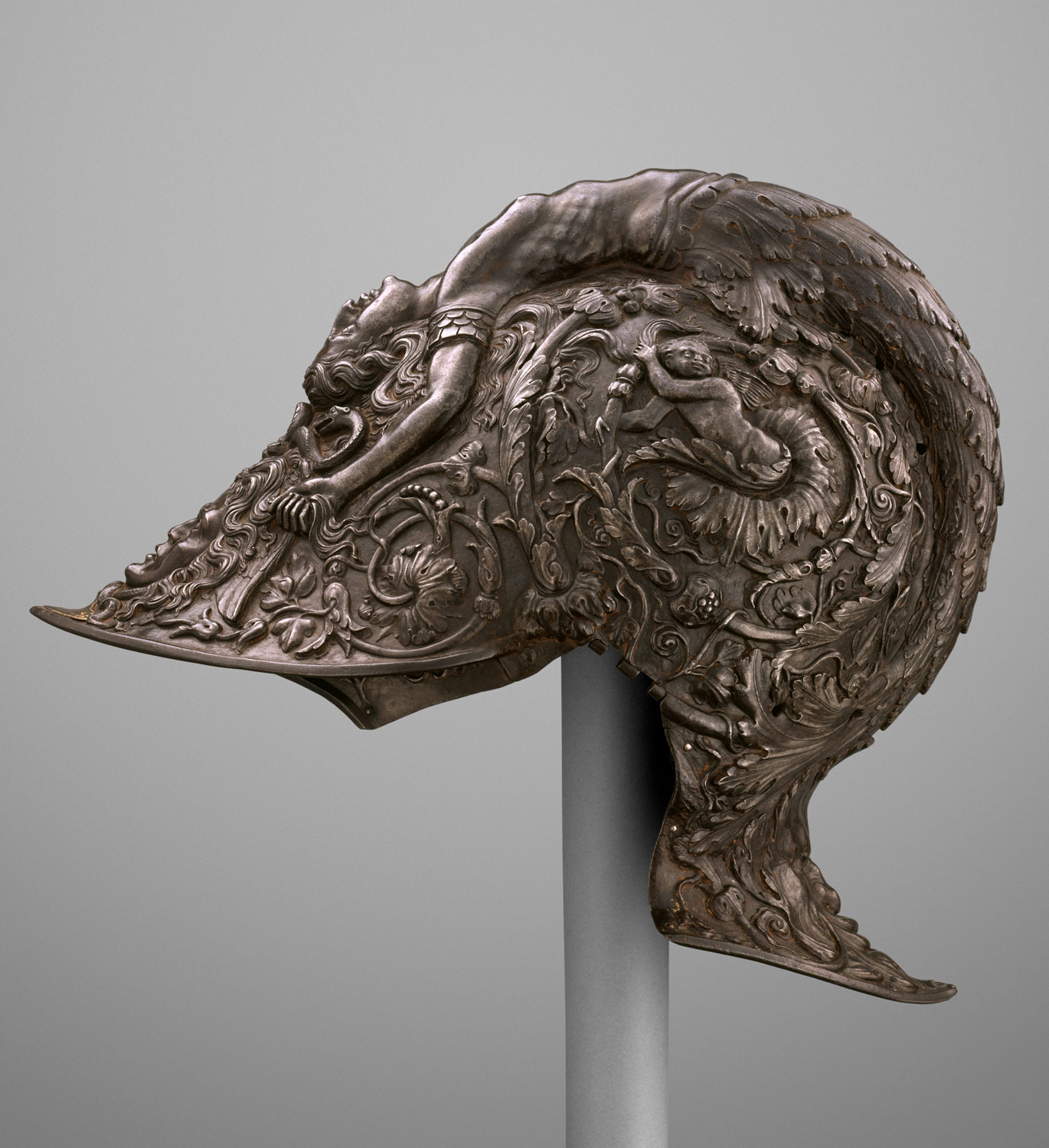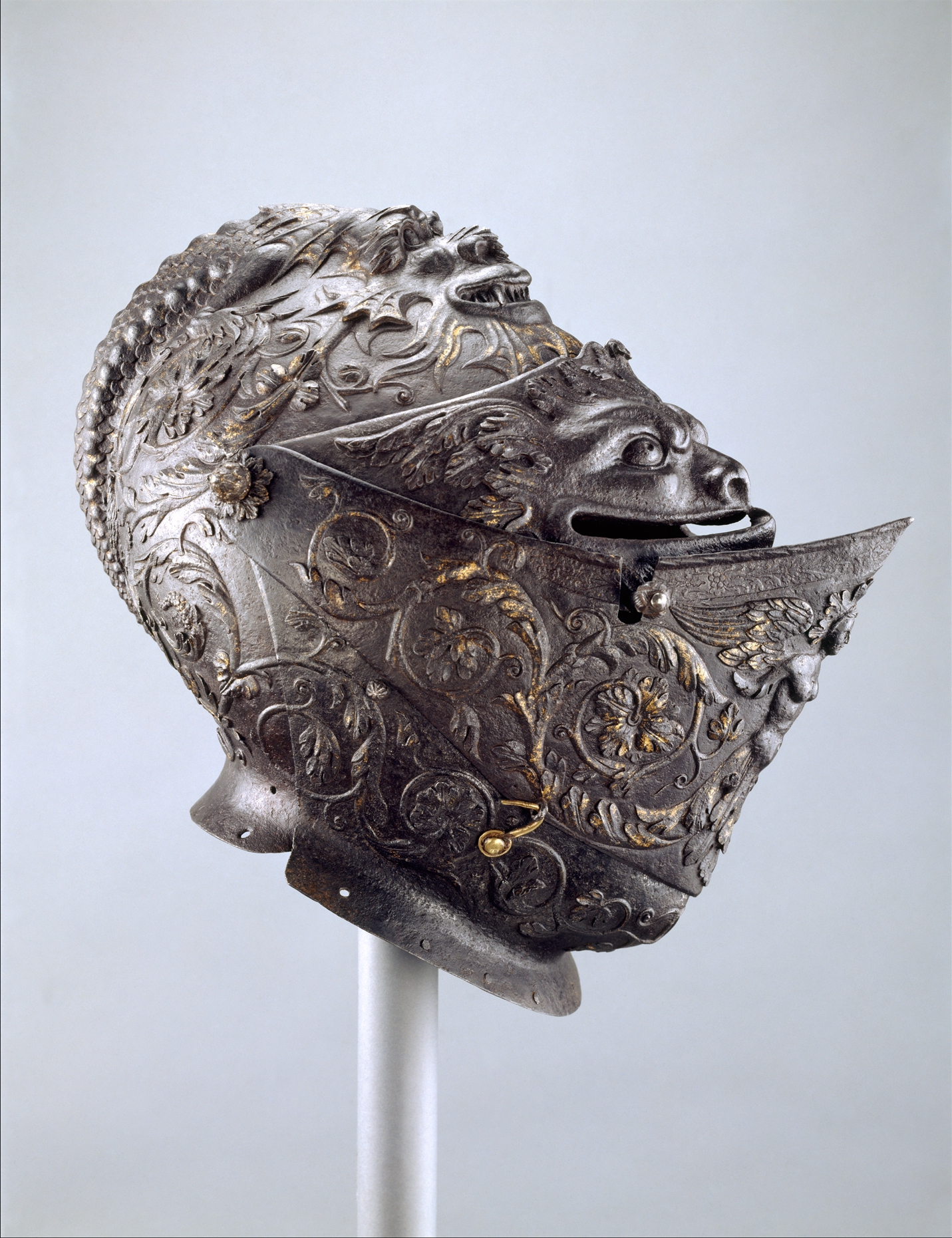When Holy Roman Emperor Charles V wanted to look faboulous and dangerous at once, he always asked Filippo Negroli, milenasian master of armors.
Filippo lived in 16th century and he was known as best and most skilled armorer in history. With the help of his brothers and cousins at their Milanese family workshop, Negroli outfitted the bigwigs of the Holy Roman Empire and the French and Spanish royal courts in incredible style. His elaborately embellished gauntlets, breastplates, shields, and helmets incorporated mythological figures like griffins, mermaids, and Medusa, as well as designs based on the art of ancient Rome. In addition to protecting internal organs from a forcefully aimed rapier or halberd, these pieces of armor played a symbolic role, transforming their wearers into the guise of the heroes of ancient history, mythology, or literature. The helmets were intended for Renaissance princes who were often educated in the classics. These highly self-assured individuals “saw themselves as successors to the great statesmen and generals of ancient Rome. Among the most impressive creations Negroli’s armory sent forth were the burgonets: military helmets characterized by a prominent peak and a comb or crest that runs all the way from the forehead to the base of the neck. The artisans at the Negroli armory were fans of depicting figures reclining across the combs of helmets.
 Negroli’s satisfied customers included Holy Roman Emperor Charles V, and French rulers Francis I and Henry II. Charles V was a frequent client, and didn’t always go in for all the mythology stuff—in some cases, the man was the myth. Negroli made a parade helmet for the emperor that incorporated Charles V’s own golden hair and beard into the design, resulting in him putting on armor that made him look like a steel version of himself. Filippo was specialized in repoussé of armour, whereas his brother Francesco was renowned for his damascening skills. Filippo's pieces are considered especially remarkable because they were wrought in steel, rather than the more-easily worked iron that was the traditionally assumed medium.
Negroli’s satisfied customers included Holy Roman Emperor Charles V, and French rulers Francis I and Henry II. Charles V was a frequent client, and didn’t always go in for all the mythology stuff—in some cases, the man was the myth. Negroli made a parade helmet for the emperor that incorporated Charles V’s own golden hair and beard into the design, resulting in him putting on armor that made him look like a steel version of himself. Filippo was specialized in repoussé of armour, whereas his brother Francesco was renowned for his damascening skills. Filippo's pieces are considered especially remarkable because they were wrought in steel, rather than the more-easily worked iron that was the traditionally assumed medium.






0 comments:
Post a Comment